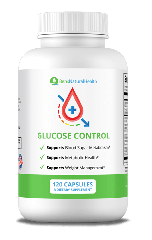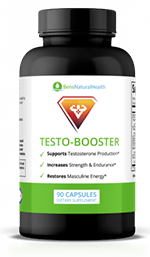- Q: What are the Most Important Tamsulosin Interactions with Other Medications?
- Q: How do Liver Enzyme Inhibitors Affect Tamsulosin?
- Q: What Should I Know about Combining Tamsulosin with Other Alpha Blockers?
- Q: Can I take Tamsulosin with Medications for Erectile Dysfunction?
- Q: How can Tamsulosin affect Eye Surgery?
- Q: What Factors can Affect the Effectiveness of Tamsulosin?
- Q: How can I Ensure that Tamsulosin Works Effectively for me?
- Key Concerns about Medications to Avoid While Taking Tamsulosin
- Conclusion
- Our Medical Review Process
- Our Editorial Guidelines
- Medical Disclaimer
- Source
IIf you or someone you know is dealing with an enlarged prostate, Tamsulosin (Flomax) is a commonly prescribed alpha-1 adrenergic blocker that relaxes the prostate and bladder neck muscles, improving urine flow.
However, Tamsulosin does not shrink the prostate, meaning BPH symptoms may worsen over time, potentially leading to the need for additional treatments or surgery.
Before starting Tamsulosin, it’s important to understand what drugs should not be taken with Tamsulosin to prevent complications such as severe hypotension, dizziness, fainting, or altered drug effectiveness.
We spoke with Dr. Parra, a renowned urologist specializing in prostate health, to discuss the potential interactions of Tamsulosin with other medications. In this article, Dr. Parra provides expert insights and valuable advice on how to manage these interactions effectively.
Get Your FREE PSA Lowering Diet Plan!
- Naturally lower PSA levels
- Reduce nighttime trips to the bathroom
- Enjoy better bladder control and urine flow
Q: What are the Most Important Tamsulosin Interactions with Other Medications?
Dr. Parra answers: Tamsulosin interacts with several types of medications, and knowing which drugs to avoid can help prevent unwanted side effects. Here’s a breakdown of key interactions:
| Type of Medication | Examples | Potential Risk with Tamsulosin |
|---|---|---|
| Liver Enzyme Inhibitors | Ketoconazole, erythromycin, clarithromycin, ritonavir, fluoxetine, paroxetine, cimetidine | Increase Tamsulosin levels, leading to prolonged effects and a higher risk of dizziness and hypotension. |
| Other Alpha-Blockers | Doxazosin, Terazosin, Alfuzosin, Prazosin | Significantly increases the risk of severe hypotension and syncope (fainting). Combination is not recommended. |
| Erectile Dysfunction Medications | Sildenafil, Tadalafil, Vardenafil | Amplifies blood pressure-lowering effects, increasing the risk of dizziness and falls. |
| Anticoagulants | Warfarin | May slightly affect warfarin metabolism, but clinical significance is unclear. INR monitoring is recommended. |
| Pain Relievers (NSAIDs) | Diclofenac | Increases Tamsulosin clearance, potentially reducing its effectiveness. |
| Antidepressants (CYP2D6 Inhibitors) | Fluoxetine, Paroxetine | Slow down Tamsulosin clearance, leading to prolonged drug action and side effects. |
| Blood Pressure Medications | Nitrates, Calcium Channel Blockers (Amlodipine, Verapamil), Beta-Blockers (Metoprolol, Propranolol) | May cause excessive hypotension when combined with Tamsulosin. |
- Liver Enzyme Inhibitors: Drugs like ketoconazole, terbinafine, paroxetine, and cimetidine can block liver enzymes, slowing down the elimination of Tamsulosin from your system. This can cause the medication to build up in your bloodstream, increasing the risk of side effects.
- Other Alpha Blockers: Medications such as alfuzosin, terazosin, doxazosin, and prazosin are in the same class as Tamsulosin. When taken together, these can increase the risk of low blood pressure, leading to symptoms like dizziness or fainting.
- Erectile Dysfunction Medications: Drugs like sildenafil and tadalafil also lower blood pressure. When combined with Tamsulosin, they can cause a dangerous drop in blood pressure. However, your doctor can adjust dosages to minimize risks.
- Antiplatelet Medications (e.g., Warfarin): Tamsulosin can alter warfarin levels in your blood. This can either increase or decrease the medication’s effect, leading to bleeding risks. If you’re on warfarin, your healthcare provider will monitor your blood levels to adjust your dose as needed.
- Eye Surgery Caution: If you’re planning eye surgery, such as for cataracts or glaucoma, let your doctor know if you’re taking Tamsulosin. It can cause a condition called intraoperative floppy iris syndrome, which may complicate the surgery.
Q: How do Liver Enzyme Inhibitors Affect Tamsulosin?
Dr. Parra answers: Tamsulosin is metabolized by the CYP3A4 and CYP2D6 enzymes in the liver. Medications that inhibit these enzymes slow down the breakdown of Tamsulosin, causing higher drug levels in the blood, increasing the risk of dizziness, fainting, and low blood pressure. This means Tamsulosin can accumulate in your bloodstream and reach higher-than-intended levels, which increases the likelihood of experiencing side effects like dizziness or fainting. That’s why doctors typically avoid prescribing medications that inhibit liver enzymes alongside Tamsulosin.
Strong CYP3A4 Inhibitors That Significantly Increase Tamsulosin Levels:
- Ketoconazole (antifungal)
- Ritonavir, Indinavir (HIV medications)
- Clarithromycin, Erythromycin (antibiotics)
Moderate CYP3A4 or CYP2D6 Inhibitors With Milder Effects:
- Fluoxetine, Paroxetine (antidepressants)
- Cimetidine (acid reflux medication)
Q: What Should I Know about Combining Tamsulosin with Other Alpha Blockers?
Dr. Parra answers: Tamsulosin should NOT be combined with other alpha-blockers (e.g., Doxazosin, Terazosin, Alfuzosin) because it significantly increases the risk of hypotension, dizziness, and fainting.
Q: Can I take Tamsulosin with Medications for Erectile Dysfunction?
Dr. Parra answers: Medications for erectile dysfunction like Sildenafil (Viagra) and Tadalafil (Cialis) relax blood vessels and lower blood pressure. When taken with Tamsulosin, this effect is amplified, potentially causing dangerously low blood pressure, dizziness, or fainting.
Medical Recommendations:
When using PDE-5 inhibitors with Tamsulosin, start with a lower dose. To lessen risk, wait at least 4-6 hours after taking Tamsulosin before taking a PDE-5 inhibitor.
Q: What Precautions Should I Take if I’m on Warfarin While Taking Tamsulosin?
Dr. Parra answers: Tamsulosin can interact with warfarin, an anticoagulant, and affect how it works in your body. This interaction can cause fluctuations in the blood’s clotting ability, which can be dangerous. If you start taking Tamsulosin while on warfarin, your doctor will closely monitor your blood levels and may adjust your warfarin dose to ensure it remains at the proper level. This monitoring is essential to prevent potential bleeding complications or other health risks.
Q: How can Tamsulosin affect Eye Surgery?
Dr. Parra answers: Tamsulosin can cause Intraoperative Floppy Iris Syndrome (IFIS) during cataract surgery, which makes the iris difficult to control, increasing surgical complications. One of the side effects of Tamsulosin is a condition called intraoperative floppy iris syndrome (IFIS), which causes the iris to become floppy during surgery, complicating the procedure. In some cases, your doctor may recommend stopping Tamsulosin before surgery to reduce the risk of this complication.
Q: What Factors can Affect the Effectiveness of Tamsulosin?
Dr. Parra answers: Several factors can influence how well Tamsulosin works for you, including your lifestyle habits and other substances you consume. Here are some things to keep in mind:
- Alcohol: It’s best to avoid alcohol while taking Tamsulosin, as it can amplify the blood pressure-lowering effects of the medication. This could cause dizziness or light-headedness, making it harder for you to go about your daily activities safely.
- Mealtime: To maintain consistent blood levels of Tamsulosin, it’s recommended that you take your medication 30 minutes after the same meal each day. This helps prevent fluctuations in the drug’s concentration in your blood.
- Flomax and Grapefruit: Grapefruit and grapefruit juice can interfere with how Tamsulosin is processed in your body. While you don’t need to cut it out completely, it’s wise to limit your intake to just one or two medium-sized glasses a day to avoid any unwanted side effects, such as dizziness or fainting when standing up.
Q: How can I Ensure that Tamsulosin Works Effectively for me?
Dr. Parra answers: To get the best results from Tamsulosin, take it regularly at the same time every day, as prescribed by your doctor. Consistency is key. If you notice any unexpected symptoms or if your BPH symptoms aren’t improving after a few weeks, don’t hesitate to reach out to your healthcare provider for advice. Your doctor might need to adjust your treatment plan to ensure the best possible outcome.
Key Concerns about Medications to Avoid While Taking Tamsulosin
Q: Are there any specific herbal supplements or over-the-counter medications that can interact with Tamsulosin?
Dr. Parra answers: While most herbal supplements do not significantly interact with Tamsulosin, some over-the-counter medications can affect its metabolism.
- Diclofenac (NSAID) increases the clearance of Tamsulosin, potentially making it less effective.
- Quercetin has been suggested to enhance prostate relaxation, but there is no strong clinical evidence that it directly interacts with Tamsulosin.
If you take herbal supplements or pain relievers, consult your doctor to ensure they do not interfere with your medication.
Q: What are the potential risks of combining Tamsulosin with antihypertensive medications?
Dr. Parra answers: Tamsulosin is an alpha-blocker that relaxes smooth muscles in the prostate and bladder. While it does not directly affect blood vessels, it can contribute to low blood pressure when combined with antihypertensive drugs such as:
- Calcium channel blockers (Amlodipine, Verapamil)
- Beta-blockers (Metoprolol, Propranolol)
- Nitrates (Nitroglycerin, Isosorbide Mononitrate)
Some patients may experience dizziness or postural hypotension, especially when standing up. If this occurs, consult your doctor to determine whether dose adjustments are needed.
Q: Can Tamsulosin interact with medications for depression or anxiety?
Dr. Parra answers: Some antidepressants and anti-anxiety medications—particularly Fluoxetine and Paroxetine—can interact with Tamsulosin by inhibiting the CYP2D6 enzyme, which slows the metabolism of Tamsulosin. This may lead to prolonged drug effects and an increased risk of side effects like dizziness or fainting, even at standard doses.
If you’re taking any antidepressants or anxiety medications, it’s important to inform your doctor. They can monitor for potential interactions and make any necessary adjustments to your treatment plan.
Q: Can Tamsulosin interact with pain relievers like ibuprofen or aspirin?
Dr. Parra answers: Most pain relievers, including Ibuprofen and Aspirin, do not interact significantly with Tamsulosin. However,
- Diclofenac increases the clearance of Tamsulosin, potentially making the medication wear off faster.
- If you take Aspirin for blood clotting, discuss it with your doctor, especially if you are also taking Warfarin.
If you notice reduced effectiveness of Tamsulosin while taking NSAIDs, consult your healthcare provider.
Q: What role does blood pressure play in determining whether certain medications should be avoided while on Tamsulosin?
Dr. Parra answers: Tamsulosin is an alpha-blocker that can cause a mild reduction in blood pressure. Studies show an average drop of 3.6 mmHg (systolic) and 1.7 mmHg (diastolic) after 12 weeks of treatment. However, some patients, particularly those on antihypertensive drugs, may experience a more significant decrease.
- Blood pressure monitoring is recommended when starting Tamsulosin.
- If taking nitrates, PDE-5 inhibitors (sildenafil, tadalafil), or other blood pressure medications, caution is advised.
Patients who experience dizziness, fainting, or lightheadedness should consult their doctor to determine whether adjustments to their medication regimen are necessary.
Conclusion
Tamsulosin is an effective treatment for BPH, but like any medication, it’s important to be mindful of potential drug interactions. Knowing what drugs should not be taken with Tamsulosin is essential to avoid complications. For example, you should avoid taking Tamsulosin with certain medications that affect liver enzymes, other alpha blockers, erectile dysfunction treatments, or anticoagulants like warfarin. Your doctor may adjust dosages to help mitigate any risks.
Additionally, lifestyle factors such as alcohol consumption, meal timing, and grapefruit intake can impact Tamsulosin’s effectiveness, so it’s important to follow your doctor’s recommendations closely to maximize the benefits of your treatment.
By staying informed and working with your healthcare provider, you can manage your prostate health safely and effectively.
Our Medical Review Process
At Ben’s Natural Health, we prioritize transparency, accuracy, and scientific integrity. Every piece of content is carefully crafted by medical experts and undergoes a comprehensive review every 12 to 24 months. This process ensures our information remains current, reliable, and grounded in credible, peer-reviewed research. We exclusively reference studies from respected medical journals, providing full citations and direct links to maintain your confidence and trust. For a detailed overview of our review process and research standards, please visit our medical review process.
Our Editorial Guidelines
For more than 25 years, Ben’s Natural Health has been a trusted authority in delivering scientifically accurate, high-quality natural health information. Our editorial guidelines are designed to uphold the reliability and integrity of our content. Articles are authored by qualified professionals, including doctors, dietitians, nutritionists, fitness specialists, and surgeons, and are independently reviewed for quality assurance. We emphasize transparency by showcasing contributor credentials and biographies at the beginning of every article. To learn more about our rigorous content creation and fact-checking process, explore our editorial guidelines.
Medical Disclaimer
The information provided on this blog is for educational purposes only and is not a substitute for professional medical advice, diagnosis, or treatment. While all content is reviewed and authored by licensed medical professionals, it may not address your individual health needs. Always consult your primary care physician or a qualified healthcare provider before making decisions about your health. Never disregard or delay seeking professional medical advice based on the information provided here. Your use of this blog and its content is entirely at your own risk.








